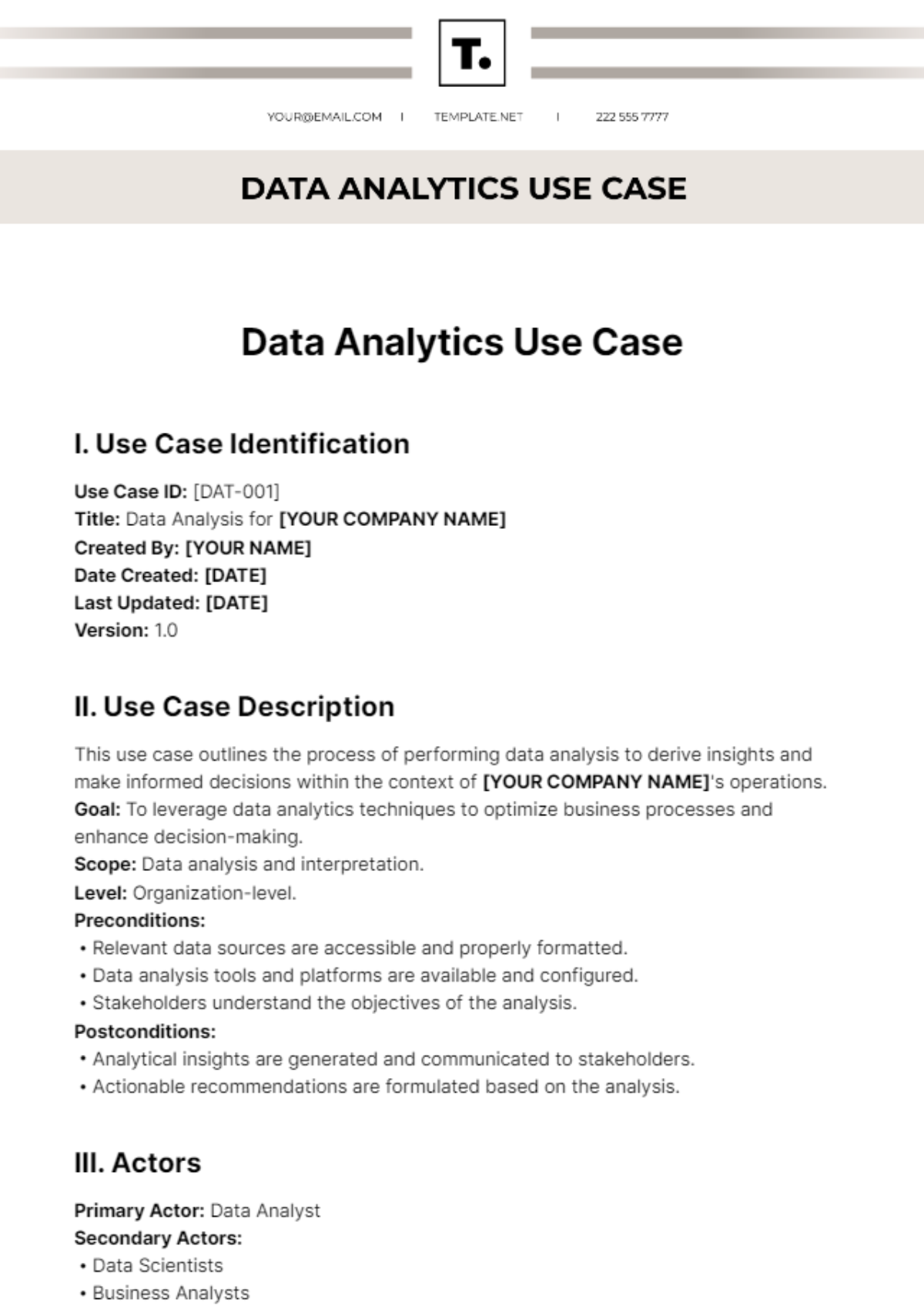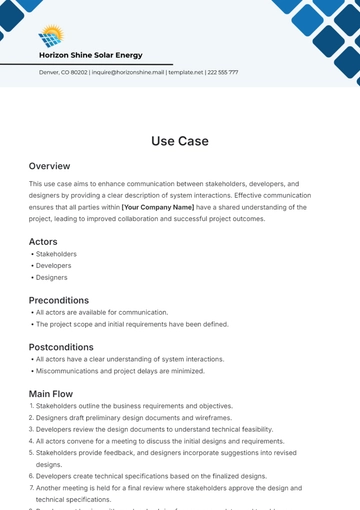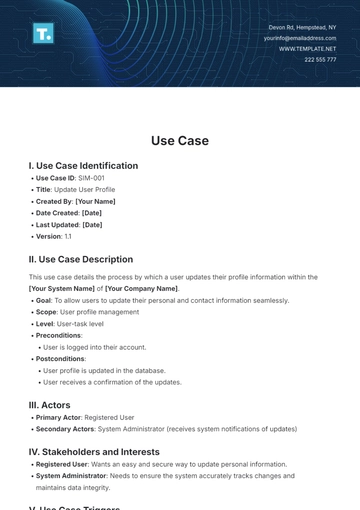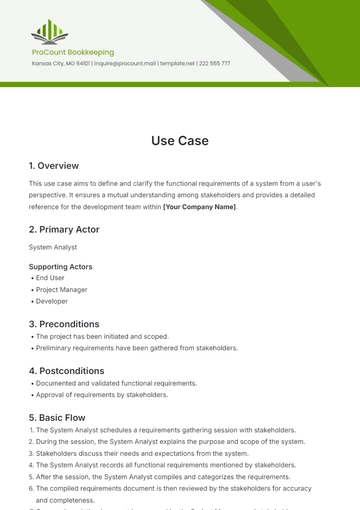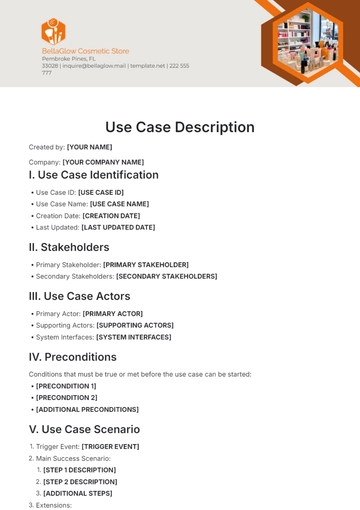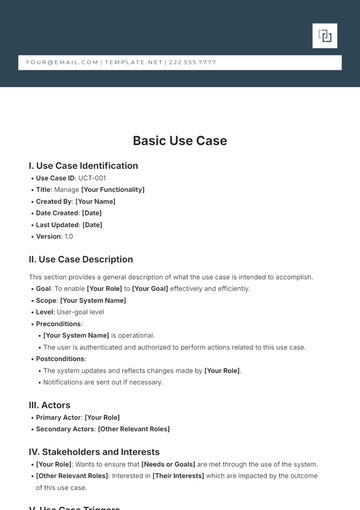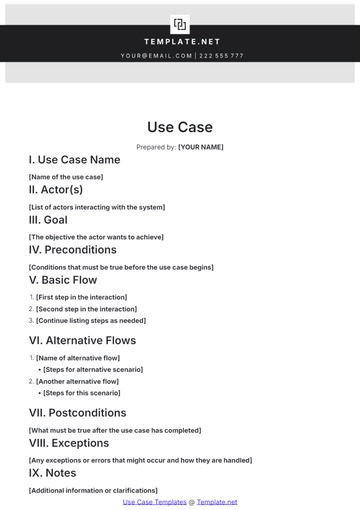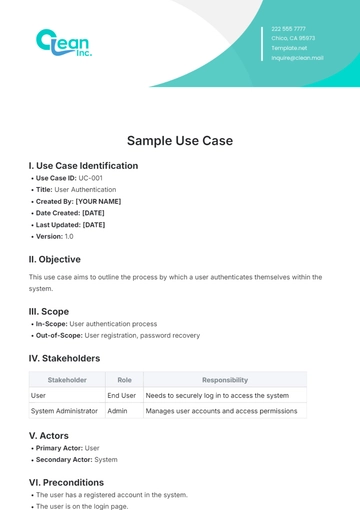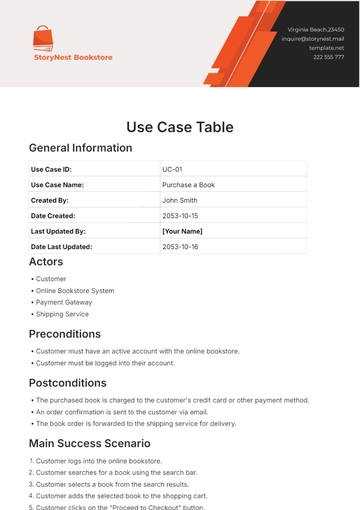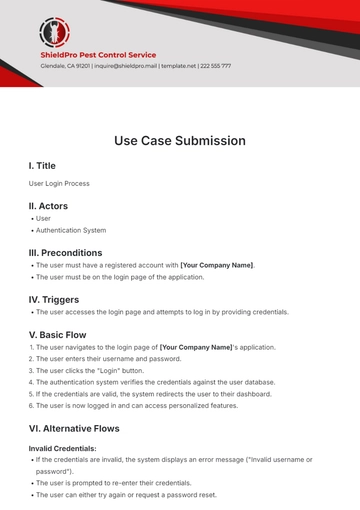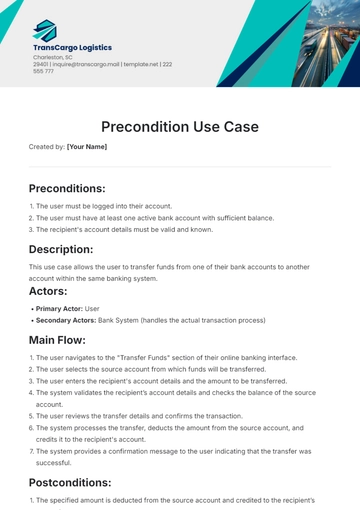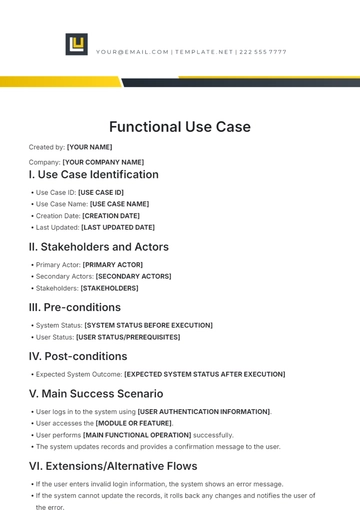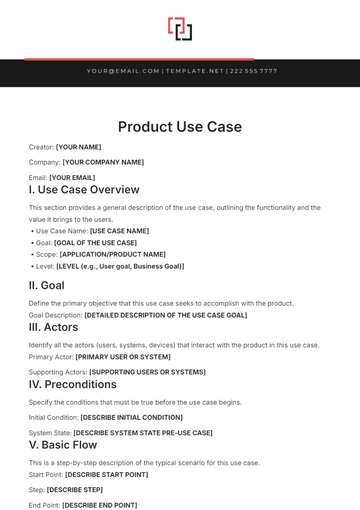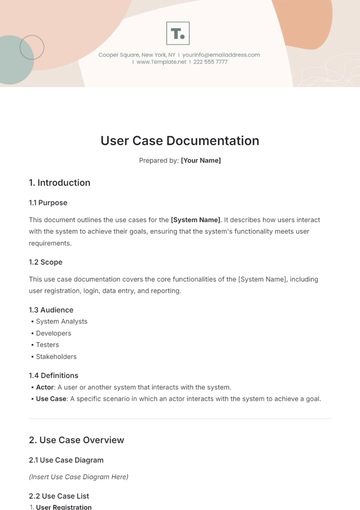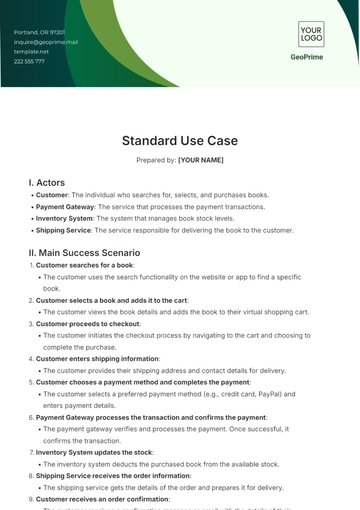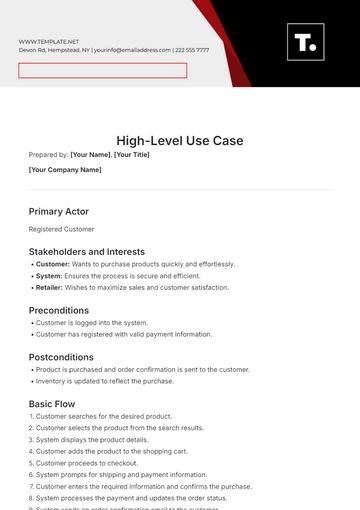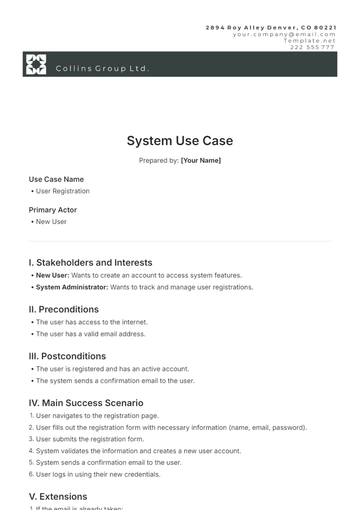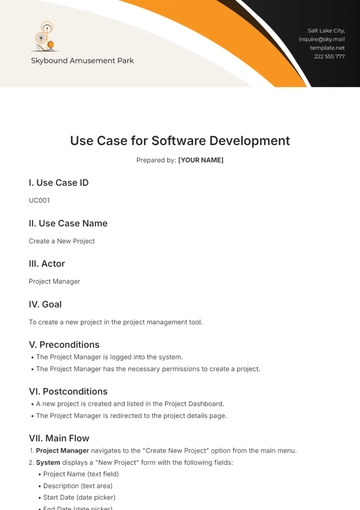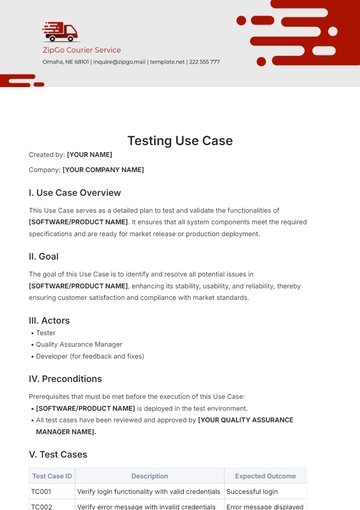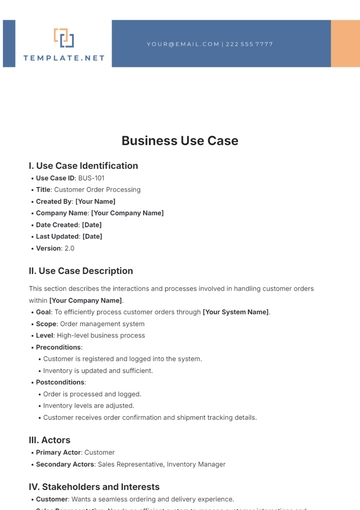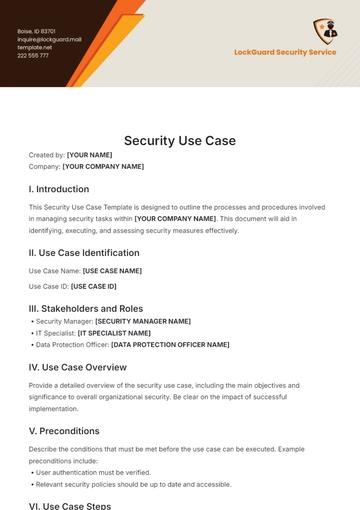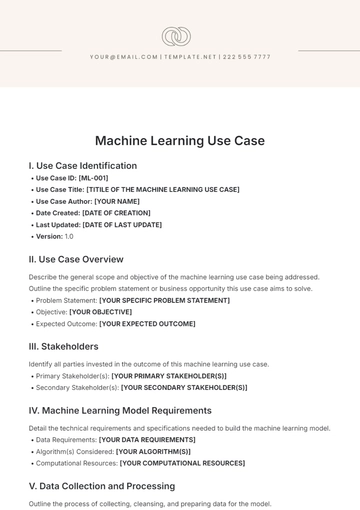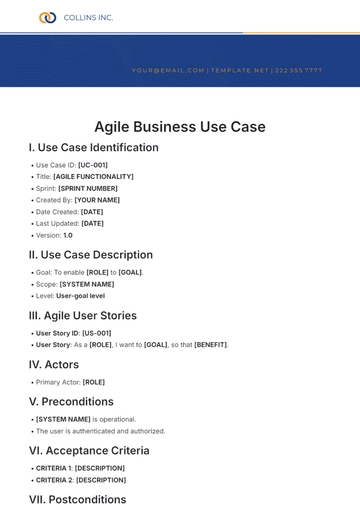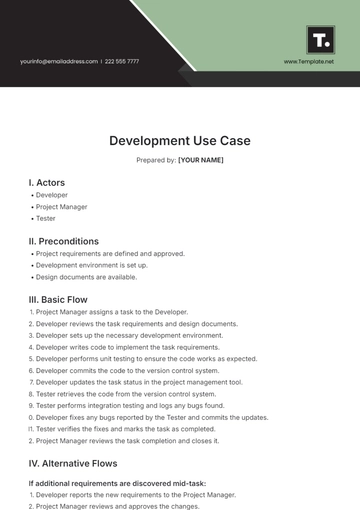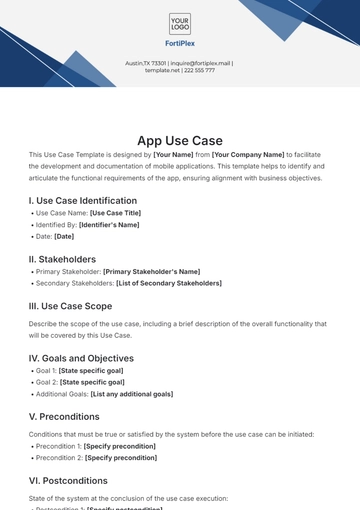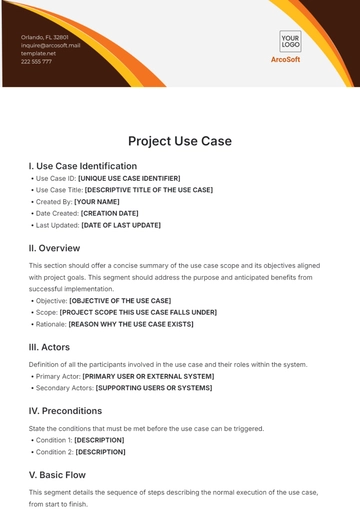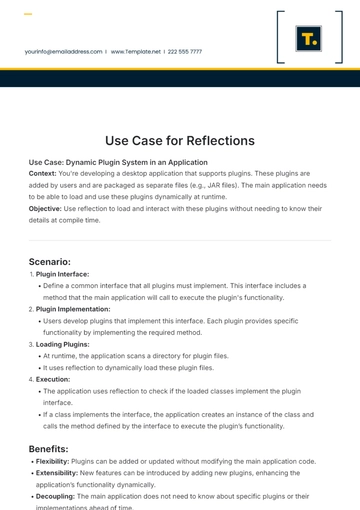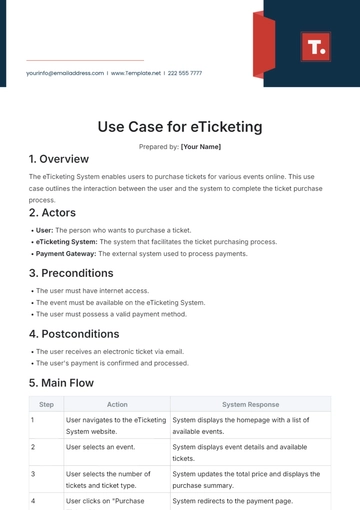Data Analytics Use Case
I. Use Case Identification
Use Case ID: [DAT-001]
Title: Data Analysis for [YOUR COMPANY NAME]
Created By: [YOUR NAME]
Date Created: [DATE]
Last Updated: [DATE]
Version: 1.0
II. Use Case Description
This use case outlines the process of performing data analysis to derive insights and make informed decisions within the context of [YOUR COMPANY NAME]'s operations.
Goal: To leverage data analytics techniques to optimize business processes and enhance decision-making.
Scope: Data analysis and interpretation.
Level: Organization-level.
Preconditions:
Relevant data sources are accessible and properly formatted.
Data analysis tools and platforms are available and configured.
Stakeholders understand the objectives of the analysis.
Postconditions:
III. Actors
Primary Actor: Data Analyst
Secondary Actors:
Data Scientists
Business Analysts
IV. Stakeholders and Interests
[YOUR COMPANY NAME]: Aims to optimize operations and enhance performance through data-driven insights.
Data Analysts: Seek to apply analytical techniques to extract valuable insights from data.
Data Scientists: Interested in advanced analytics and modeling techniques.
Business Analysts: Require actionable insights to support strategic decision-making.
V. Use Case Triggers
Triggering Event: Initiation of a data analysis project or request for analysis.
VI. Main Success Scenario (Basic Flow)
Data Analyst identifies the objective of the analysis.
Data Analyst gathers relevant data from sources such as databases, APIs, or files.
Data Analyst cleans and preprocesses the data to ensure accuracy and consistency.
Data Analyst performs exploratory data analysis to understand the characteristics and patterns within the data.
Data Analyst applies appropriate analytical techniques (e.g., statistical analysis, machine learning algorithms) to derive insights.
Data Analyst interprets the results and identifies actionable recommendations.
Data Analyst communicates the findings and recommendations to stakeholders through reports, presentations, or dashboards.
VII. Extensions (Alternative Flows)
5a. If the data quality is poor:
6a. If the analysis reveals unexpected insights:
VIII. Special Requirements
Security Requirements: Ensure compliance with data privacy regulations and implement measures to safeguard sensitive information.
Technology Requirements: Utilize appropriate data analytics tools and platforms, considering factors such as scalability and ease of use.
IX. Assumptions
Stakeholders have access to the necessary data and resources required for analysis.
Data sources are reliable and up-to-date.
Stakeholders possess the requisite knowledge to interpret and act upon the insights generated.
X. Frequency of Use
This use case is expected to be utilized on an ongoing basis as part of [YOUR COMPANY NAME]'s data-driven decision-making process.
XI. Miscellaneous
Diagrams: Include visual representations such as data flow diagrams or data visualization examples to aid in understanding.
Notes: Regular training and upskilling of data analysts and stakeholders may be necessary to keep pace with advancements in data analytics techniques and technologies.
Use Case Templates @ Template.net
